Fjord1 Recharges Its Fleet
Norwegian ferry owner and operator Fjord1 has signed a newbuilding contract with Turkey-based Tersan Shipyard for two battery- powered ferries that will be solely powered by batteries. The two new craft are expected to commence service from 1st January 2018 on the E39 that links Anda and Lote on the west coast of Norway. This will be the first ferry connection in Norway where the Road Administration requires use of zero-emission technology. The new ferries are therefore an important step towards more environmentally friendly public transportation. Charging the batteries is accomplished through fully automatic charging stations at the quayside. Battery capacity will be sufficient to continue operations for several hours without charging, e.g. during maintenance on the national grid or at charging stations. In addition, the ferries will also be equipped with biodiesel generators, which enable potential operation as plug-in hybrids on other fjord crossings in the future. The capacity of each ferry will be 120 cars, 12 trailers and 349 passengers and construction begins in October 2016. The design has been developed by the Norwegian ship design company Multi Maritime, in co-operation with Fjord1.
Incat Crowther Newbuild
The Majestic 7 (above) was launched in June and is the first of four HSC catamaran passenger ferries designed by Incat Crowther to be delivered to Majestic Ferries in Singapore. The Majestic 7, part of a multiple- vessel order which has been further expanded to include a pair of larger capacity vessels due to be launched in late 2016, was built at PT Cahaya Samudra Shipyard in Indonesia, and will operate between Singapore and Batam. According to Incat Crowther, the 33m vessel gives the operator increased capacity and speed at a fraction of the typical fuel consumption. Powered by a pair of MAN D2862 LE463 main engines, rated at 1,029kW, driving fixed pitch propellers, the 200-passenger capacity craft performed well in sea trials, reaching a loaded speed in excess of 30 knots. The service speed will be 28 knots at a reduced MCR. Passenger access is via midship doors and the seating is forward-facing. In addition, there are four seats for crew members. At the aft end of the cabin is a six-person crew room and kiosk. The upper deck features just the wheelhouse with excellent all-round visibility. The 33m long and 8.5m beam vessel is built to the HSC 2000 code under Bureau Veritas survey.
New Moroccan Link
Moroccan and pan-African banking group BMCE Bank Of Africa Group and Attica Holdings S.A., a subsidiary of the Marfin Investment Group, have entered into an agreement to operate scheduled ferry services from Morocco to Europe through the newly-established Moroccan company Africa Morocco Link (AML). Attica Group holds 49% of the new company, while 51% is held by a group of Moroccan shareholders led by BMCE Bank Of Africa Group. The Tanger Med (Morocco)-Algeciras (Spain) route was inaugurated on 17th June 2016 using the 12,499/1990 built and 141m long ferry Diagoras (above) purchased by AML. The annual traffic volumes between Morocco and Europe are estimated at around 4 million passengers, 1 million private vehicles and 260,000 freight units, according to Attica. Further routes planned are Nador (Morocco)-Almeria (Spain) and Tanger Med (Morocco)-Sete (France). The 38,261gt/ 1992 built El Venizelos joined the Diagoras on the Algeciras-TangerMed service from 7th of July.
Manannan Trials
The Isle of Man Steam Packet Company conducted a berthing trial at Holyhead Port with fast craft Manannan (above) overnight on 29th/30th June as part of the Company’s ongoing assessment of Holyhead’s suitability as a back-up alternative to the harbours that she regularly serves. In May the Ben-my- Chree underwent a successful berthing trial at the port. The Port of Holyhead, a 24-hour, deep-water, lock-free harbour shielded from the Irish Sea by a 1.5-mile breakwater, is only a two hour voyage by fast craft from the Isle of Man. The A55, a dual carriageway, provides a direct connection between central Holyhead and the motorway network, with the M6 only 90 minutes away. The port also has a train station with regular services and direct links to London and Cardiff. The Anglesey facility is certainly better suited than Fleetwood, the subject of a campaign to restore a Manx link.
New Era For Bornholm
The island of Bornholm is a Danish island in the Baltic Sea, located to the east of the Danish mainland, south of Sweden, northeast of Germany and north of the westernmost coast of Poland. The main industries on the island include fishing, dairy farming, arts and crafts and tourism. The island is 67.47km2 in size with an approximate population of 39,685. Ferry operator Mols-Linien and the Bornholm Ministry of Transport signed the contract in June 2016 for the ferry services to and from Bornholm effective from 1st September 2018. This is the first time that a new ferry operator has controlled the Island’s services as the previous company, Færgen, lost the bidding process. The new contract will be in place until 31st August 2028. The benefits of the new contract include lower fares (by around 51%) on the Ronne-Køge and Ystad-Ronne services. The primary highspeed craft will be the KatExpress 1. The Køge service will also benefit from a 158m long and 24.5m beam newbuilding. This was announced on 22nd June as being built by the Rauma Marine Constructions (RMC) shipyard in Finland at a cost of €68 million. RMC was established after the closure of STX Europe’s Rauma shipyard (builders of the Ulysses, the Color Line Superspeeds and Spirit of Britain/ France, amongst others) in 2014. This is the first newbuilding contract secured by the company.
Scandlines Record Breaker
On 1st July the new 22,319gt hybrid ferry Berlin (above) conveyed the highest ever number of tourist cars on a Rostock-Gedser sailing. That morning the ship loaded 233 cars, 2 mobile homes, 11 caravans, 5 buses and 20 trucks to fill the two vehicle decks, along with a total of 1,079 passengers. A freight carrying record was also set shortly after this occasion. With such performance, the new ferries will soon reap rewards for the EUR 140m investment per ship. The displaced 16,071gt/1980 built Prins Joachim, now renamed Prince, began service for her new owners, European Seaways, between Brindisi, Kerkira, Igoumenitsa, Kefalonia and Zakinthos in early July.
A Megastar Is Born
On 1st of July the new LNG powered fast conventional ferry Megastar (above) was christened at Meyer Turku’s shipyard in Finland. The environmentally sound ship was christened by former president of Finland Tarja Halonen. The steel cutting for Tallink’s Megastar started on 4th of August 2015, the keel was laid on 9th February and the float-out and sea-trials were planned for July and the last months of 2016 respectively. The delivery of the vessel is planned to take place at the beginning of 2017. The Megastar will combine the comfortable service, social eating experience of open-layout dining areas, versatile choice of lounges and well-designed shopping solutions of her fleet mates. The ship boasts dual-level embarkation, enabling the passenger vehicles and large freight units to embark/disembark simultaneously. The passenger areas are improved with easy and wide access to all venues, including a quiet lounge. There will also be a number of smart services on board.

The Megastar will be 212m long and will accommodate 2,800 passengers. She will offer the same length and capacity as the largest Tallink cruise ferry, the 48,915gt/2009 built Baltic Queen. The Megastar will use LNG as fuel, but will also be able to run on diesel. The 49,000gt ship will have a service speed of 27 knots. Designed for the Tallinn- Helsinki route exclusively, the Megastar will comply with the current and future emission regulations for the ECAs (Emission Control Area), including the Baltic Sea. The Captain of the Baltic Queen, Vahur Sõstra, has been appointed as the Captain for the Megastar. Captain Sõstra is already engaged in crew training and preparations for the new ship.
New Era For SCA
SCA Logistic’s new Ro-Ro schedule came into effect on 1st July, serving new facilities at Malmo (Sweden), Sheerness (UK) and Kiel (Germany).
SCA Logistics is part of SCA’s (Svenska Cellulosa Aktiebolaget) Forest Products business unit, which produces paper for packaging and print, pulp, solid-wood products and renewable energy. SCA Forest Products also manages SCA’s extensive forest holding and supplies SCA’s Swedish industries with wood raw materials in addition to offering cost-efficient transport solutions. SCA was founded in 1929 and is based in Stockholm. Full operations commenced at the new Kiel facility at the beginning of July, once a week, offloading 6,000 tons of forest products with each visit. A cooperation which dates back 20 years between SCA Logistics and Iggesund Paperboard has seen an expansion over the past year with around a million tonnes of paperboard, paper and pulp shipped annually via a new transport link to and from Kiel.
There has been a major shift in the traffic from Ro-Ro to container freight and the shipping group and paper producer has phased out operations at the distribution centre in Lübeck and relocated to the new main terminal in Kiel, 85 kilometres to the North. A total of €25 million have been invested in the Ostuferhafen and 70 new jobs created, fifty of them at the Port of Kiel’s own handling company. The new forest products centre comprises Warehouse 1 and Warehouse 2, which are each of 10,000m² plus the smaller Warehouse 4. Their capacity is complemented by Warehouse 8 (the Ferry Boat Hall) which has more than 7,000m² of capacity. An even larger hall (Warehouse 5) is currently under construction to offer 18,000m² of storage space.
The official opening of the new SCA centre here is set for November 11th. When SCA’s Ro-Ro vessels began calling at Kiel, Ro-Ro traffic between Sundsvall, Umeå, London and Rotterdam was reduced from the current number of two departures per week, to one. The service is maintained by moving a considerable volume from Ro-Ro to containers. To allow for this development, SCA Logistics’ existing container route between Sundsvall, Umeå, Rotterdam and St. Petersburg has been expanded. The container volumes in SCA Logistics’ terminals in Sundsvall and Umeå are growing by 80% to 90% and in Rotterdam by 50%. At the same time, the Ro-Ro volumes at these ports will decline proportionately.
SCA Logistics’ move to Sheerness as the UK port of call in favour of the comparatively restrictive Tilbury (lock system and tides) was a major boost to the Peel Ports owned facility. The new distribution hub there will handle over 300,000 tons of freight per year for SCA. The move from Tilbury to Sheerness was gradual and commenced at the end of 2015 with the Sheerness operation performing at 100% by 1st July 2016.
In The Wake Of Brexit
The EU Referendum has, according to various industry sources, created uncertainty and raised concerns about how its impact on the free movement of people and goods could negatively affect the cruise and ferry sector. Prior to the UK referendum, Brittany Ferries warned that a Brexit vote could affect these day to day movements with the ferry company writing an open letter, which said: “The principles that still drive our business after more than 40 years complement fundamental principles of the Treaty of Rome: breaking down barriers, facilitating the free movement of people and augmenting crossborder trade. Having grown within this framework, we are of course supporters of the Remain position. We know that many passengers and freight customers may disagree, but we believe many things we take for granted, particularly the free movement of people and of goods, might become more difficult were we to exit.” Other ferry operators were also against the UK’s decision to leave the EU but some have since mooted that the only benefit would be a return to Duty Free sales! In many other ways, there was a clear advantage in the EU keeping together. The Freight Transport Association (FTA) also warned that the Brexit win risks new costs, restrictions and bureaucratic requirements being imposed on moving goods in and out of Europe. Nevertheless, despite challenges and concerns, the message from the passenger shipping sector is very much: “keep sailing and carry on”.
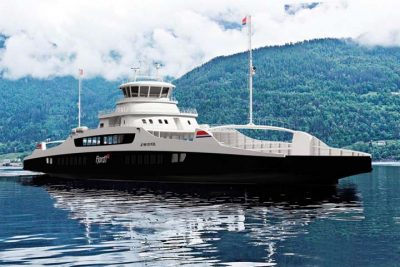
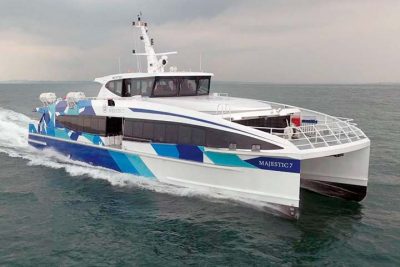
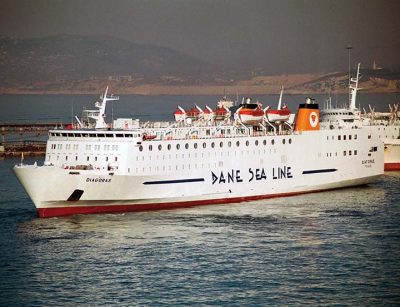
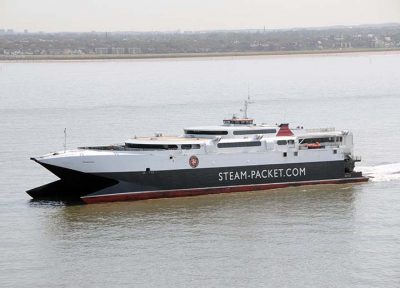
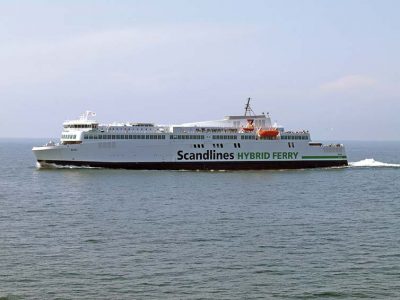
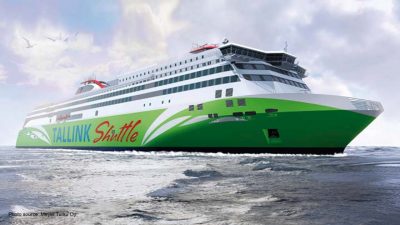
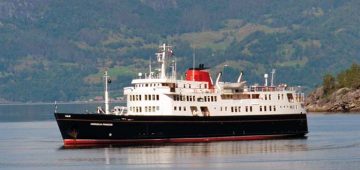



Comments
Sorry, comments are closed for this item